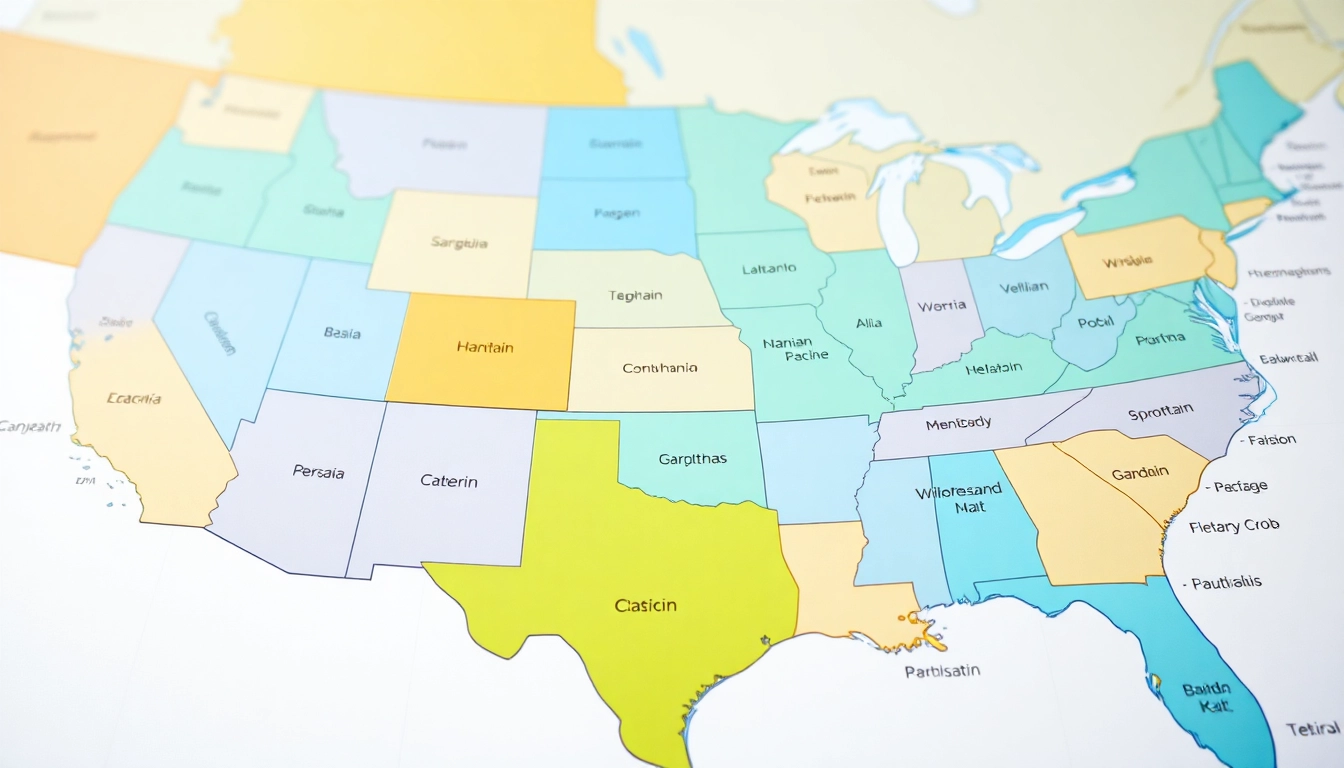1. Introduction to Trademark Registration
In today’s global economy, brands are paramount to business success, and protecting those brands through trademark registration is important. This article elucidates the nuances of trademark registration in India and the US, delving into processes, requirements, and distinct legal frameworks in both jurisdictions. Understanding these aspects can help businesses strategically navigate their branding efforts while securing their intellectual property rights.
1.1 What is Trademark Registration?
Trademark registration is the legal process of securing exclusive rights to a brand’s name, logo, symbol, or slogan used in commerce. By registering a trademark, businesses can prevent others from using similar identifiers that could cause confusion among consumers. This process not only establishes a brand’s identity but also provides legal backing to defend against infringement claims.
1.2 Importance of Trademark Registration in India and the US
In both India and the US, trademark registration is essential for brand protection. It offers several key advantages:
- Legal Protection: Registered trademarks provide legal presumptions in favor of the owner, making it easier to defend against infringement.
- Exclusive Rights: A trademark owner has exclusive rights to use the mark for the goods or services listed in the registration, preventing others from using a confusingly similar mark.
- Brand Recognition: Registration increases the visibility and credibility of a brand, enhancing consumer confidence.
- Asset Value: Trademarks add value to a business, as a well-established brand can be a significant asset during mergers or acquisitions.
1.3 Common Misconceptions About Trademark Registration
Despite its importance, many businesses harbor misconceptions regarding trademark registration:
- Trademark Registration is Optional: Many believe that unregistered trademarks offer sufficient protection. In reality, unregistered marks are vulnerable to challenges and easier for competitors to contest.
- Common Law Protections Are Enough: While common law may provide some level of protection through passing off, registered trademarks generally offer broader legal recourse.
- Registration Guarantees Absolute Protection: While registration helps protect against infringement, it doesn’t eliminate the risk entirely, especially if marks are similar in nature.
2. The Trademark Registration Process in India
2.1 Steps for Filing a Trademark Application in India
Filing for a trademark in India involves several systematic steps:
- Conduct a Trademark Search: Before filing, it’s advisable to conduct a preliminary search to ensure no existing trademarks are too similar to the proposed mark.
- Prepare the Application: An application must be prepared which includes details such as the applicant’s name, address, and the trademark they wish to register.
- File with the Trademark Registry: Submit the application to the appropriate registry. India has five regional trademark offices across the country.
- Examination Process: The application will undergo examination by a trademark examiner. They may raise objections that must be addressed promptly.
- Publication: If the application clears examination, it is published in the Trademark Journal for public opposition.
- Registration Certificate: If no opposition is filed, or if the opposition is resolved in the applicant’s favor, a registration certificate will be issued.
2.2 Required Documentation for Filing in India
The following documentation is typically required when filing a trademark application in India:
- Trademarks Application Form: The appropriate forms must be completed and submitted.
- Identity Proof: Proof of identity of the applicant (Aadhaar card, passport, etc.).
- Business Registration Documents: In the case of companies, incorporation certificates are required.
- Brand Logo or Representation: If a logo is being trademarked, a copy must be provided.
- Goods/Services Details: A detailed description of the goods or services linked to the trademark must be included.
2.3 Timeline and Costs Associated with Registration
The timeline for trademark registration in India can vary:
- Application Filing: Immediate.
- Examination Period: Typically takes 6-12 months.
- Publication: Approximately 3 months for any oppositions to be raised.
- Issuance of Registration: If opposition does not occur, registration can take up to an additional 6 months.
The overall costs will typically range from INR 4,500 to INR 9,000 for individual applicants and can vary depending on the services provided by trademark attorneys and additional documentation required.
3. The Trademark Registration Process in the US
3.1 How to File a Trademark Application with USPTO
The United States Patent and Trademark Office (USPTO) manages trademark registrations in the US. The filing process includes:
- Choose the Correct Application Type: Determine the appropriate application type, either TEAS Plus, TEAS Standard, or TEAS Reduced Fee.
- Conduct a Trademark Search: Similar to India, a thorough search is necessary to check the availability of the mark.
- Prepare the Application: The application must include details about the trademark, the goods and services it pertains to, and the basis for filing (use in commerce vs. intent to use).
- Filing with USPTO: Submit the application online via the USPTO’s Trademark Electronic Application System (TEAS).
- Examination by an Attorney: After submission, a USPTO examining attorney reviews the application for compliance with legal requirements.
- Publication: If approved, the trademark will be published in the Official Gazette, allowing for opposition from third parties.
- Registration: If no opposition arises, or upon resolution of any oppositions, the mark is registered, and a certificate is issued.
3.2 Key Requirements for US Trademark Registration
To successfully register a trademark in the US, several key requirements must be met:
- Distinctiveness: The trademark must be distinctive and capable of identifying the source of goods or services.
- Use in Commerce: The trademark must be used in commerce, or there must be a bona fide intention to use it in the near future.
- Filing Basis: The application must specify the appropriate filing basis (use in commerce or intent to use).
- Identification of Goods/Services: A detailed description of the goods or services associated with the trademark is mandatory.
3.3 Renewal and Maintenance of Trademark Registration in the US
Trademark registrations in the US are not indefinite and require periodic maintenance:
- Renewal: Trademarks must be renewed every ten years, with the first renewal occurring five years after registration.
- Declaration of Use: A Declaration of Use must also be filed between the 5th and 6th year to show continued use of the trademark.
- Monitoring and Enforcing Rights: Owners must actively monitor and enforce their trademark rights to maintain their protections.
4. Key Differences Between Trademark Registration in India and the US
4.1 Legal Frameworks Governing Trademarks
The legal frameworks for trademark registration differ significantly between the two countries:
- India: Governed under the Trade Marks Act, 1999 and the Trade Marks Rules, 2017, which stipulate processes for registration, opposition, and enforcement.
- US: Governed by the Lanham Act, which outlines the procedures for federal trademark registration and protection.
4.2 Enforcement and Protection of Trademark Rights
Enforcement mechanisms differ in practice:
- India: Enforcement often relies on civil courts and is sometimes hindered by delays and legal complexities in proceedings.
- US: Trademark owners have the option of federal court litigation or using alternative dispute resolution methods, often leading to quicker resolutions.
4.3 International Implications for Businesses Operating in Both Countries
For companies operating in both India and the US, understanding the international implications of trademark registration is critical:
- Territoriality: Trademark rights are territorial, meaning that registration in one country does not confer protection in another.
- The Madrid Protocol: Both countries are signatories to the Madrid Protocol, enabling streamlined international trademark applications through a single filing.
- Compliance with Local Laws: Businesses must navigate distinct compliance requirements and legal contexts in both countries to ensure comprehensive brand protection.
5. FAQs and Expert Insights
5.1 Common Questions About Trademark Registration
Understanding trademark registration can pose challenges to many businesses. Here are some frequently asked questions:
- How long does trademark registration take? It can vary based on jurisdiction but typically takes anywhere from 8 months to a few years depending on objections and oppositions.
- Do I need a lawyer to register a trademark? While not mandatory, legal assistance can streamline the process and enhance the chances of a successful registration.
- Can I Trademark a Name Already in Use? This depends on the distinctiveness of the name and the likelihood of confusion. A thorough trademark search can clarify this.
5.2 Tips for Businesses on Trademark Strategy
Businesses should consider the following tips for effective trademark strategy:
- Conduct Comprehensive Searches: Prior to filing, a thorough search can mitigate potential conflicts with existing marks.
- Stay Informed: Monitor industry trends and changes in trademark law to proactively adjust trademark strategies.
- Consider Global Protection: For businesses looking to expand internationally, consider filing through the Madrid Protocol for broader coverage.
5.3 Future Trends in Trademark Law and Registration
As global commerce evolves, trademark law continues to adapt. Key trends include:
- Increased Use of AI: AI technologies are becoming prevalent in searching for existing trademarks and monitoring brand usage in digital spaces.
- Expansion of Trademark Classes: As businesses diversify, adaptations in classes of goods/services may occur to reflect new market realities.
- Greater Emphasis on Enforcement: With online marketplaces and social media, vigilant enforcement of trademark rights is becoming increasingly crucial.



